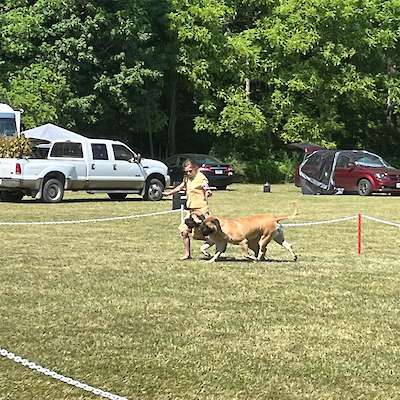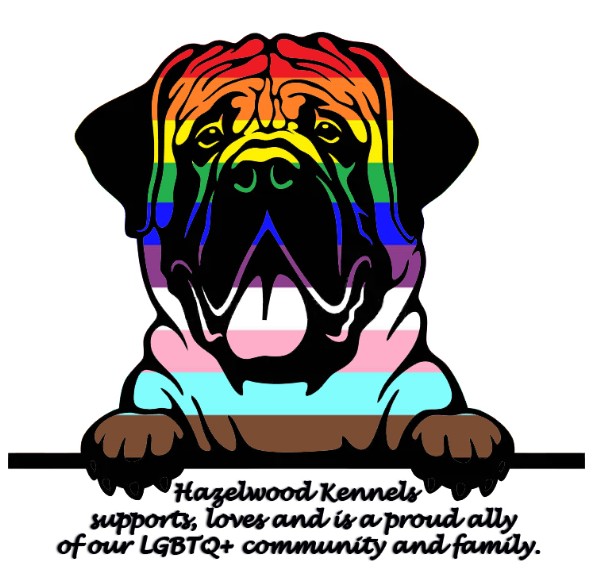Puppy Socialization Milestones
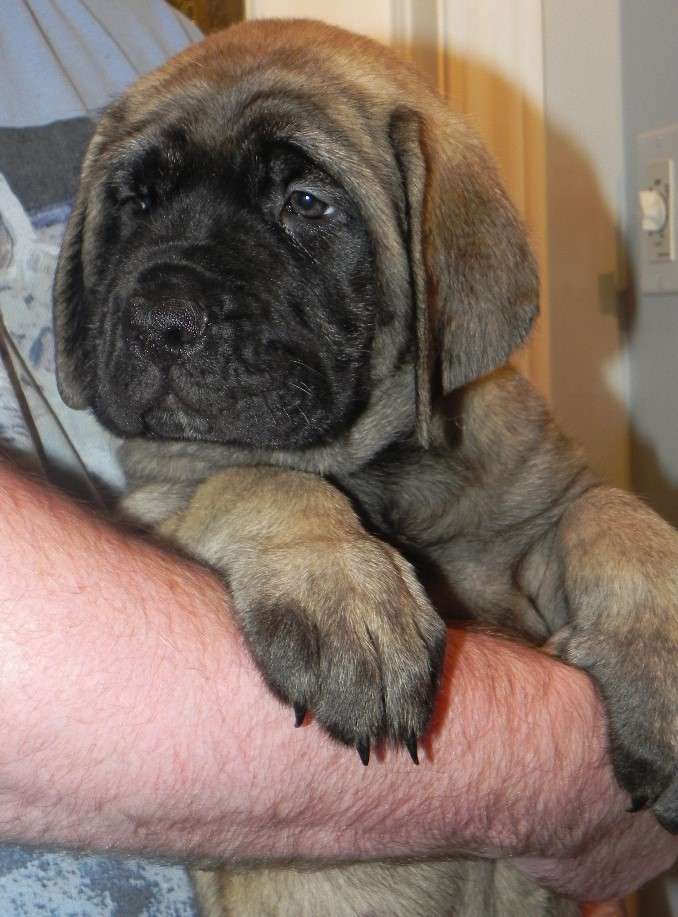
When it comes to development, puppies go through many different stages both physically and mentally...and when you look at socially, you will see a large number of socialization milestones. All of these milestones are important for development and we will go through each one in depth.
When it comes to development, puppies go through many different stages both physically and mentally...and when you look at socially, you will see a large number of socialization milestones. All of these milestones are important for development and we will go through each one in depth.
Stage One: Neonatal Period
This stage runs from birth until 12 days old.
When puppies are born, their eyes and ears will be closed so the puppy will be relying primarily on tactical stimulation to navigate the big world of his den, or whelping box, along with olfaction (sense of smell). While it may not seem like he is doing much in the ways of socialization, this is a very important period.
Puppies are very alert to changing temperatures and can become stressed very easily. While we try to minimize major stresses, during this stage, it is still important to subject the puppies to some minor stressors in the safety of their whelping box.
These minor stressors includes carefully picking up puppies, weighing them, holding them for short periods of time, and petting them. Doing this for a few seconds per day has been proven to be an excellent foundation in socialization for two reasons.
One, positive interactions with humans will introduce the puppy to his first messages to humans; namely, that humans will touch them throughout their life and they are a positive part of said life.
Second, extensive studies have shown that puppies that experience minor stressors are generally more outgoing and are often easier to train.
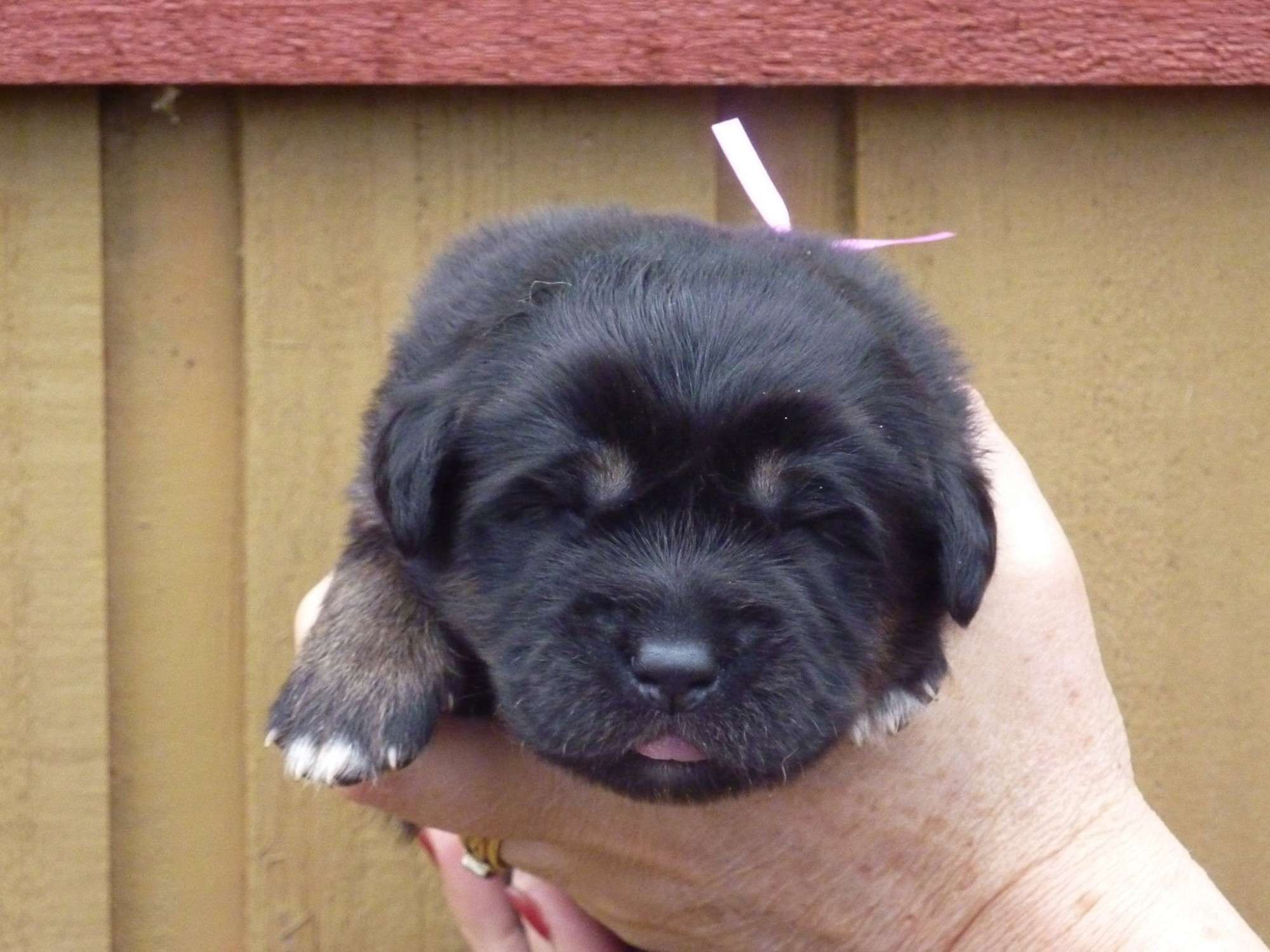
Stage Two: Transitional Period
This stage of puppy social development runs from Day 13 until Day 20. It is an exciting period because the puppy’s world is beginning to come into focus. During this stage, eyes and ears are beginning to open slowly and the puppy will begin to use sight and sound to navigate the world of his whelping box.
One thing that should be mentioned is that this development is a gradual development. When eyes begin to open, he will start by seeing shadows and most of what puppy is seeing is blurry. Eventually, he will begin to see the shapes of his litter mates and so on. Hearing also develops gradually.
During this stage, socialization is done in a similar way that it was done during the first 12 days. Puppy should be subjected to mild stressors such as handling, rotating puppies with nursing and petting them. In addition, puppies should be moved to new smells and surfaces while they are in close proximity to their litter mates.
Placing them in a warm, safe basket when bedding is being changed is a great way to do this introduction to new areas for the puppy.
Keeping puppies in small areas for short periods of time, such as in a basket together during a bedding change, will help the puppies build bonds with their litter mates and will foster positive interactions when they get older.
In the whelping box, cleanliness is extremely important for both the health of the puppies and their socialization. Studies have shown that keeping a whelping box clean and free of soiled bedding will encourage faster housebreaking in the puppies as they get older. During this stage, different types of bedding and surfaces can be placed in the whelping box so puppies can experience different stimulation from surfaces.
Finally, while you are focused on tactile socialization, it is important to start introducing the puppies to new sounds. However, it is very important that sounds be low and soothing. Loud, jarring sounds can startle the puppies and create a negative reaction and experience that can affect the social development of the puppy.
By following simple rules and being aware of the transitional period, breeders can help shape the character of the puppies in a positive manner during this stage of social development.

Stage Three: Awareness Period
This stage starts at day 21 and runs to day 28.
It is the stage where the world comes into focus for the puppies. Their eyes and ears have opened and they are able to see and hear distinctly. With this new way to explore their world, puppies at this age begin to have an increased interest in the world around them.
During this stage, they begin to move around more and may begin to try standing and playing. While they are exploring, their main focus on the day to day is still eating and sleeping. However, in the time between those main interests, puppies will begin stumbling around their whelping box and playing, chewing on and figuring out their littermates.
Since their awareness is growing at this stage, now is an excellent time to start introducing puppies to new stressors in a positive manner. New surfaces, and textures can be added to the whelping area or the puppies can be placed on a new surface. It is important for their social development that new interactions are done calmly and with reassurances to the puppy. If it becomes a negative experience for the puppy, it can cause a negative reaction that could affect the social development of the puppy.
During this stage, some introduction to new people is okay but it should be limited for several reasons. One is disease that can be spread to the puppies. The other is that some bitches can be very protective of her puppies and will not trust many people near them. Again, how the bitch reacts to a stimulant can affect how a puppy does so it is always important that, whether it is a person, item or texture, it is done in a positive way for not only the puppies but for the bitch as well.

Stage Four: Canine Socialization Period
Unlike the other stages, the canine socialization period actually overlaps other socialization periods and it is broken up into two different periods. People will see this period when they start to notice that the puppies are having distinct periods of sleep and play that are separate from the other.
Period One: 21 to 49 days of age
This period of puppy social development overlaps into the awareness stage of development. While puppy is becoming aware of the world around him, he is also learning about other dogs and from those dogs.
Although the puppy will have human interaction through the breeders and any other humans in the home, the majority of his day to day life will be with his dam and his littermates. This means that he is learning key social manners that are important for his role as a family pet. Bite inhibition is one of these manners that he will learn from both his dam and his littermates.
During this period, the puppy will learn their litter hierarchy. If left unattended, the litter will develop naturally with more submissive puppies and more dominant. This is a critical stage of puppy social development and one that the breeder needs to be active in. Watching the puppies during play will help the breeder understand the different temperaments of the puppies.
In addition, any excessively aggressive behavior can be curbed and redirected if the breeder is watching. When a puppy is aggressive, it is important for the breeder to separate the puppy and redirect him until he is calm. When he is calm, praise and then return to the litter. By doing this, it creates a more even hierarchy and can help curb negative behaviors and aggressions later in life.
By allowing puppies to play, assert oneself when there is aggressive of bullying behaviour, and letting the dam teach the puppies, this social period will be very rich for the puppies.
Studies have shown that positive stimuli and by following the tips above, there is a lower occurrence of aggression, including fear, and there is less biting as puppies have learned bite inhibition.
In addition to this socialization, it is important to continue with stimuli and to create a clear separation between the play area, the potty area and the sleeping area to lay the foundations for future training. Puppies who are adopted before 8 weeks of age miss out on this key area of socialization, which is why the practice of early adoption is discouraged.
Period Two: 49 to 84 days of age
The second period of canine socialization occurs immediately after the first period and while it is just a continuation, the puppy is experiencing new stressors and his world is about to get bigger. This is the period when the puppy will be separated from his litter and dam and taken to his new home.
It can be a very traumatic experience for a puppy; however, if the breeder spends some time separating the puppy from the litter for short periods, the amount of stress he experiences will be lowered when he finally goes to his new home.
It is very important that the separation be as positive as possible as this period is when fear responses will begin to occur. Negative experiences will increase the fear reactions and positive reinforcement of fear reactions, such as coddling a puppy, can lead to an increase in those reactions instead of a decrease. This can lead to socialization problems and can lead to a shy and timid dog or even fear aggression later in life.
During this period of socialization, and once he has settled into his new home, training can begin and puppy will begin to bond with his new family as a replacement to his litter.
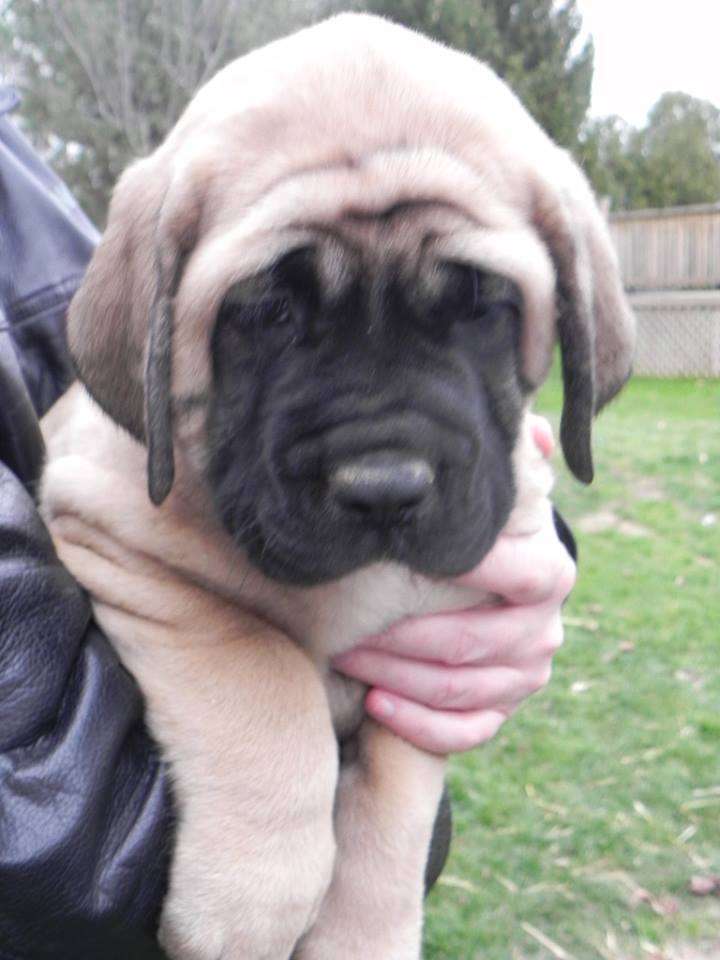
Stage Five: Human Socialization Period
Stage five is another period that overlaps other socialization periods for the puppy. This stage is from 49 to 84 days of age and is the stage where the puppy will be separated from his litter and dam. This is the stage where puppy goes to his new home around 8 weeks of age.
Like all social development stages, this is an important stage and should be handled in a positive manner. Interactions over the first few days at home should be limited to people in the home. Animals should be gradually introduced so puppy is not overwhelmed by stimulation.
During this period of socialization, the puppy will begin to bond with his new family. However, socialization should be extended to more than just the immediate family. As vaccinations allow, the puppy should begin to be socialized to a wide range of experiences, stimuli and people. In fact, by 12 weeks of age, studies suggest that the puppy should have been exposed to over a 100 people and new experiences. By following this human interaction socialization and providing positive socialization experiences, puppies are less likely to have poor social manners and behaviors.
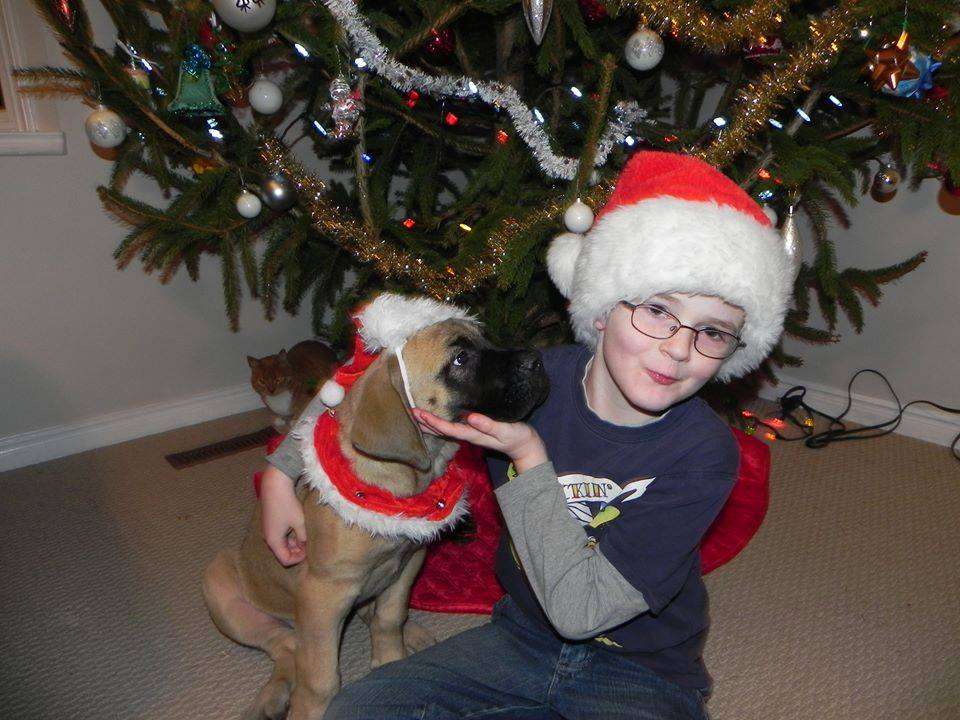
Stage Six: Environmental Awareness Period
The environmental awareness period overlaps the human socialization period and covers the ages of 70 to 112 days of age. This is actually the time when your puppy will begin to have his own personality and his home environment will contribute greatly from this. During this stage of social development, the puppy will begin to have his independence.
Studies have shown that puppies raised in single dog homes will bond closely with their owners but may be lacking in dog social skills. In addition, those same studies have shown that multi-dog homes often run the reverse where puppy develops more dog social skills and less human/dog social skills. This is often due to the fact that multiple dogs rarely spend one on one alone time with their human.
Regardless of the home, it is important be aware of the socialization that your puppy is getting during this stage and to provide him with time on his own, time with other dogs and time with people. Puppy socialization class is a wonderful time to introduce your puppy to other dogs and people, whether he is an only dog or not.
As I mentioned already, this socialization period is the time when your puppy will really grow into himself. He will become more independent and will often test his limits in the home. It is often the period when owners will see challenging behaviors such as puppy temper tantrums and talking back. It can be a challenging time for dog owners but it is important not to provide positive reinforcement for the puppy’s bad behavior. Instead, puppy should be corrected instead of coddled when he is talking back or having a temper tantrum.
Training is important during this stage and should be done on a regular, daily basis along with age appropriate socialization depending on the vaccinations that your puppy has.

Stage Seven: Fear Periods
Like stage four, this period of is seen several times through the first two years of the dog. However, unlike stage four, it can be seen at different times depending on the breed, the individual dog and the circumstances of the puppy’s life and upbringing.
Overall, the fear period is always seen in puppies that are 56 to 77 days of age. After that, puppies are usually pretty inquisitive and will not have another fear period until they are 6 to 14 months with some dogs having a final fear period around 18 months of age.
Fear periods are a very important stage of puppy socialization that owners should be aware of. The reason for this is because any mishandling of the puppy during the fear period can lead to a number of problems including shyness and fear aggression.
During this stage of social development, a seemingly fearless puppy can suddenly become fearful of things. During the 56 to 77 day period, which is between 8 to 11 weeks, the puppy will be going through a major event when they are going to their new home. That is why it is important to make the arrival of puppy as calm as possible. Avoid high stress events such as going to a pet store on the way home or visiting people before puppy has a chance to settle into his new life and routine.
During the 6 to 14 months, the puppy will go through additional fear. This is perfectly normal and it has been linked to periods of rapid growth for the puppy. It is important to get your puppy out and around new noises, people and experiences during fear periods. This will help him with socialization and with learning not to be fearful of these experiences.
When you are working through a fear period, it is very important not to reinforce that fear reaction. Instead, praise and reward the puppy when he goes near something that he is scared of. Do not comfort or baby your puppy when he is trying to flee or reacting in a fearful manner. This lets your puppy know that fear is okay and will reinforce fear behaviors.
One of the main points about the fear periods is that, with proper socialization and training, a puppy will have fewer fear periods. In addition, those fear periods will be less pronounced and will last for shorter periods than if the dog is not properly socialized during all of the key social developmental stages.
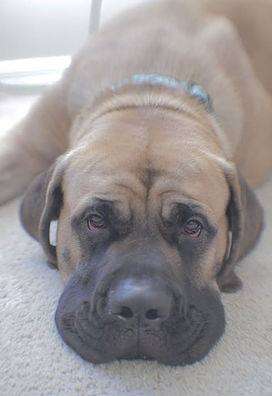
Stage Eight: Adolescence Period
This stage of development lasts between 4 to 8 months and is considered to be the teen years of the puppy. It is important to note that the adolescence period occurs at different times depending on the individual breed. Most breeds will reach this stage at 4 to 8 months, however, slow maturing breeds will go through this stage in the 10th or 11 month and it may last until the dog is about 2 and a half years of age.
The adolescence period is exactly as it sounds, it is a period when the puppy is challenging his owner and is trying to find his own way. This is the period when a seemingly trained puppy suddenly stops listening. He may try to wander away, might regress in housetraining, or he may become destructive. Many puppies going through this period will start to ignore commands that he fully understands.
While it can be a frustrating stage of social development, consistent training and socialization will minimize the effects of the adolescence period and will help in getting through it faster.
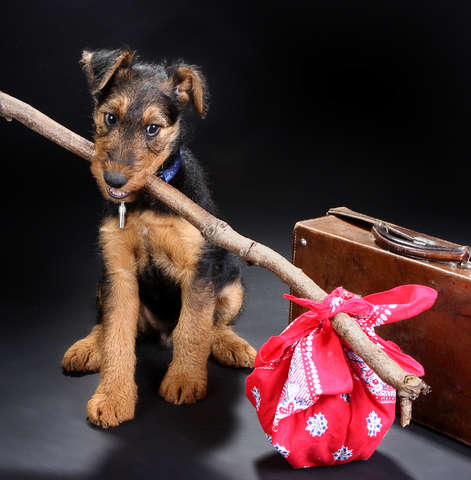
Stage Nine: Maturity and On
Maturity is something that is different depending on the individual dog. According to most studies, a dog is mature once it is old enough to be bred, usually about a year to 18 months of age. However, socialization wise, you are looking at between one year to two years before puppy has reached social maturity.
In breeds that are known as “Peter Pan” breeds, social maturity can take much longer and it is not uncommon for it to go into year four. The maturity period is when puppy has become a dog. How your socialization and training has gone before this period will greatly determine how well adjusted your mature dog will be. However, if you have followed the advice throughout this article, and you have trained and socialized your puppy consistently, you will end up with a well rounded companion and family member.
For more information on socialization checklists, visit our article on the subject.


